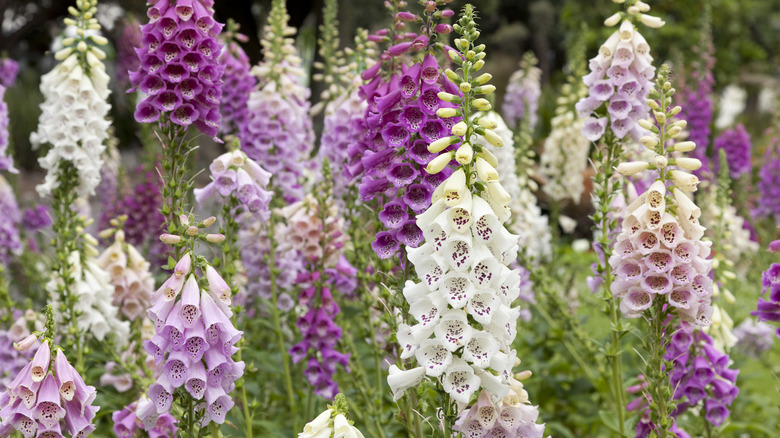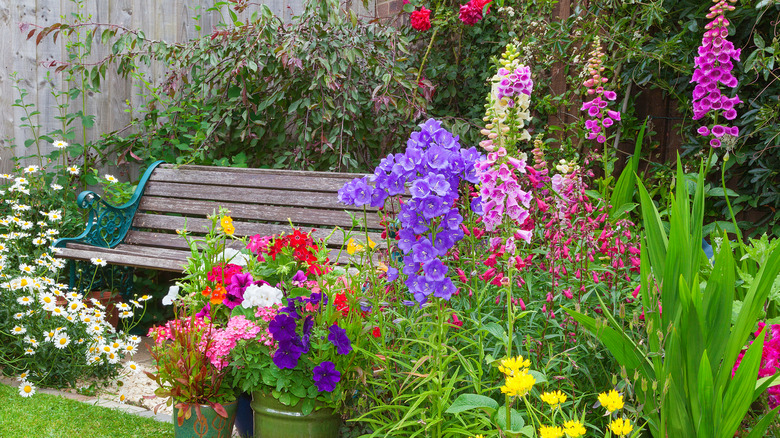Simple Steps For Pruning Foxgloves Into Healthy Plants With Stunning Blooms
Foxgloves are a great way to add height to a flower garden, and are a quintessential part of the cottage garden aesthetic. As foxgloves generally bloom in spring or early summer, you may be unsure what to do with the plant once it has finished flowering. Sadly, common foxgloves (Digitalis purpurea) are only biennials, so after they flower in their second year, the plant will die. Fortunately, some gentle pruning before they bloom as well as collecting or sowing the seeds from the flowers will ensure you have a gorgeous foxglove garden year after year.
One essential thing to keep in mind if you're considering growing foxgloves, is the fact that they are quite poisonous. So if you have curious young children or pets who are prone to getting into your gardens, you may want to opt for a flower other than foxglove. Fortunately there are many tall flowers besides foxgloves that can add a similar element to your garden.
Pruning foxgloves for yearly blooms
During their first year of growth foxglove plants are just rosettes of leaves that only grow about a foot high. These leaves shouldn't require much, if any pruning. Once spring of the next year comes, the foxglove's flower should start to form. If necessary, you can prune away any leaves that are taking up too much space.
After the spectacular flower on your foxglove starts to fade, you'll have to decide what to do with the plant. You can deadhead the foxglove or remove it entirely if you want, as it won't come back again for another year. Alternatively, you can wait a bit longer and ensure the seeds fully develop. Allowing some of your foxgloves to drop seeds should guarantee you'll have foxgloves growing in the same area year after year. You could also collect the seeds if you prefer to propagate foxgloves somewhere else in your yard or garden.

